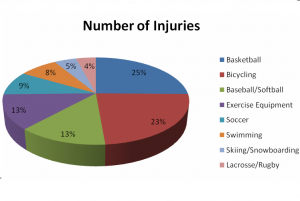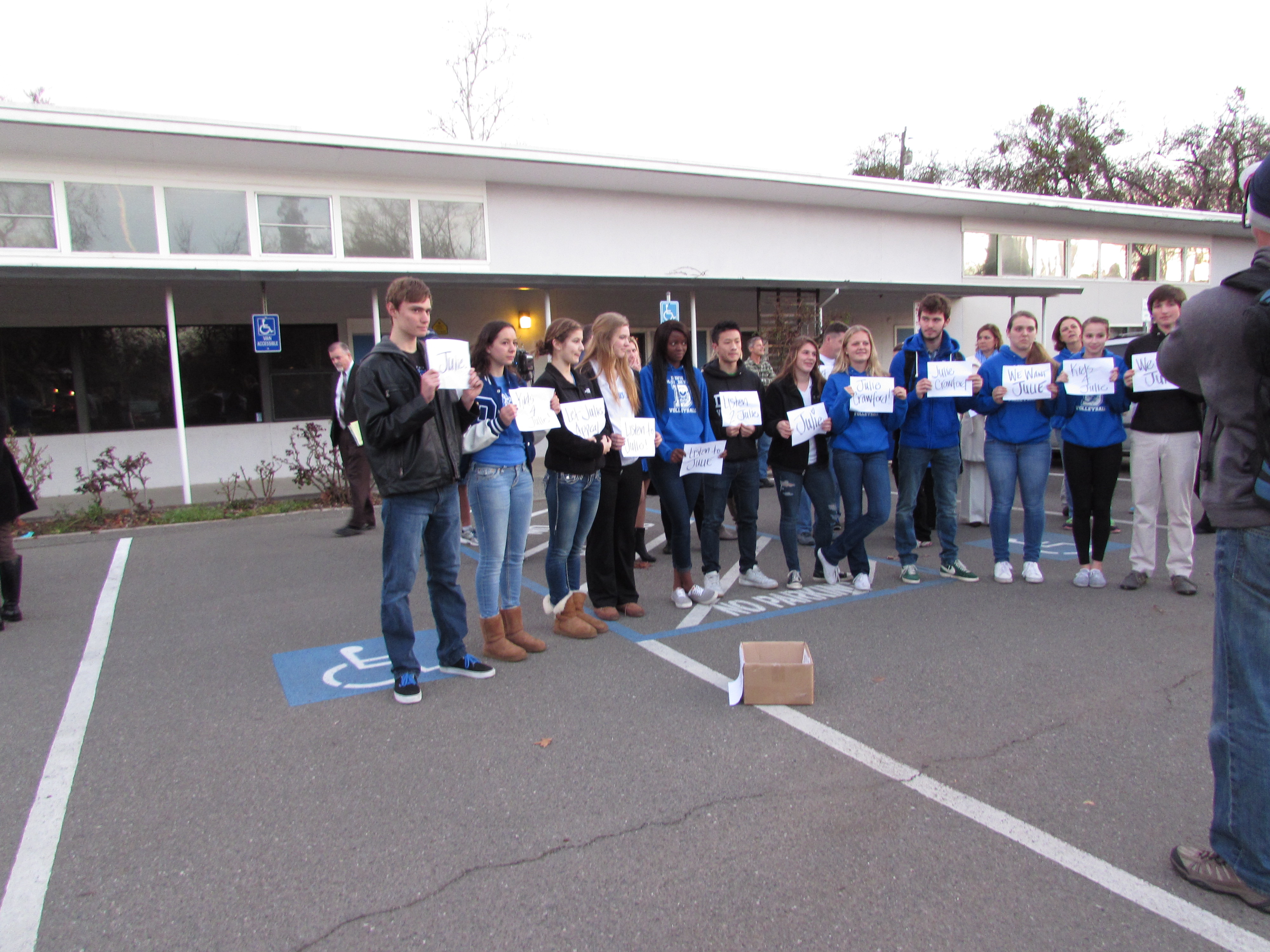Sports injuries plague DHS students
Water splashed on the pool deck as the coach called out times and splits. Gasping and coughing, the young swimmers darted for their water bottles and Gatorades as they waited for their next instruction.
These children are members of the Davis Aquadarts, and have committed to a year round sport.
Jeff McCormick, a physical therapist at Sutter Health, believes that playing a single sport or pursuing dance with repetitive motions early on in life as well as not alternating between sports, can cause injuries from overuse.
“Kids are choosing a sport earlier and being asked to play year round earlier than five to 10 years ago. As a result, growing bones, muscles and joints are being over used and not given a chance to rest and recover,” McCormick said.
 McCormick believes that the reason that physical therapists see so many overuse injuries is because children are being asked to play one sport year round as early as eight years old. Even if a child is playing two sports, rather than alternating between sports, the child will play two sports at once causing the injuries normally seen in adults.
McCormick believes that the reason that physical therapists see so many overuse injuries is because children are being asked to play one sport year round as early as eight years old. Even if a child is playing two sports, rather than alternating between sports, the child will play two sports at once causing the injuries normally seen in adults.
Sophomore Kallie Gregg has been swimming her whole life and has been playing water polo since fifth grade. She developed an injury in her shoulder from repeated motion.
“It happened the summer of 2008. I was swimming double workouts, along with water polo most days and I was used to being sore. One day, after a brutal butterfly set, I could barely lift my arm,” Gregg said.
Since that summer, Gregg has seen four doctors and two physical therapists. The doctors still do not know exactly what is causing the pain in her shoulder. Of the diagnosis she has received are tendonitis, impediment syndrome, muscle tear and scarred tissue, all of which are examples of overuse injuries.
Adults who have these injuries can seek surgery, but because of Gregg’s age and her stage of growth, surgery is not a good option.
Though Gregg has yet to find a treatment for her injury, she still does stretches and uses therabands (elastic band/tubing), in hope of improvement.
Like Gregg, McCormick also uses a variety of equipment to treat injuries including modalities, (scheduled workouts) and exercise equipment.
McCormick said the recent biggest trend in high school athletes is to be overspecialized in a sport, which leads to many overuse injuries.
This was the case with sophomore Marea Newell. Newell, a dancer for the Applegate dance company, developed a stress fracture in her left tibia. She has been dancing for more than 10 years.
A stress fracture is caused by unusual or repeated stress and is common in runners, gymnasts and dancers.
Newell danced through the pain because she had a show, but then saw a doctor in Sacramento. The doctor put her calf in a boot-like cast to restrict movement. To treat her stress fracture, she iced her leg where it hurt and took anti-inflammatory medicine. After two months, Newell was out of her boot and dancing again.
McCormick thinks that rest is the key treatment for an overuse injury like a stress fracture. There are also precautions to be taken because, “in order to effectively prevent re-injury we need to determine the cause.”
Da Vinci senior Carly Gohring is also a dancer at Applegate Company. She, like Newell and Gregg, developed an injury from repeated motions.
In the beginning of her junior year she had to stop dancing due to a hip injury; which was later diagnosed as iliopsoas tendonitis. Gohring also developed sartorious tendonitis also in her hip due to dancing.
Iliopsoas tendonitis is the inflammation of the iliopsoas muscle in the hip. It is usually caused by repetitive motions involving the hip. Dancers usually suffer from this injury because of repeated jumping.
Gohring did not dance for four months and during that time she iced two to three times a day. Her physical therapist recommended pool therapy to take the pressure off her hip.
When she returned to Applegate Dance Company she had to take it slow. She was told to dance for 15 minutes and then take a five minute break to rest.
It took her two months to start dancing full classes without break. When she returned to normal classes, she got to class 15 minutes earlier so she could warm up. She is now trying to strengthen both hips. She feels that she is in a better place than ever because, now, she is aware of how to prevent further injury.
Like Gohring, DHS junior Anna Nicholson found a way to prevent further injury and pain. Nicholson injured her shoulder during high school swim season last year, and had to miss some practices due to the pain.
She then went to see a physical therapist who gave her exercises to work on. Like Gregg, she uses therabands to strengthen her shoulder muscles. She found that when she did the recommended exercises the pain was lessened overall. Today, if her shoulder hurts, whether from swimming or playing water polo, she does her exercises, and they relieve the pain.
Despite their injuries, all of these athletes and dancers are still competing and dancing after their injuries and some of them still have to endure the same pain on a daily basis.
Newell is now dancing with no damage from the injury, and is now preparing for her collage show, a show with a variety of dances with different stories, later in the year. Alongside her, Gohring is also preparing the collage show, but with a new sense of caution and knowledge of what her body can and cannot handle.
Nicholson’s shoulder injury is a reoccurring one, but she finds that when the pain seeps back, she can look to her exercises for relief.
Unfortunately, Gregg has yet to find a treatment for her shoulder injury, but is still playing water polo through the pain year round, without a complaint.



